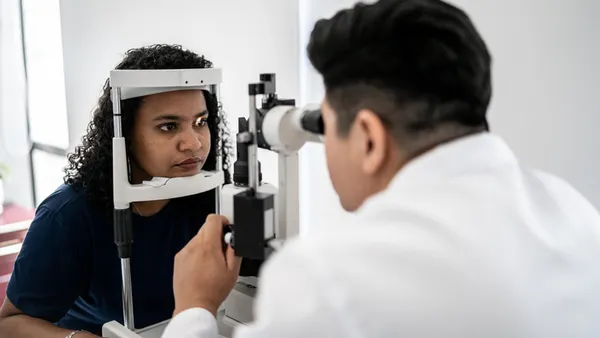Dive Brief:
- Patients who develop atrial fibrillation for the first time after transcatheter aortic valve replacement (TAVR) are at higher risk of death and stroke than patients whose afib was diagnosed before the procedure, concludes a new study from Duke University published in the Journal of the American College of Cardiology (JACC).
- Afib developed in 8.4% of patients in the Duke study who did not have the heart rhythm disorder before the procedure. It occurred most often in people who were older, female and had severe chronic obstructive pulmonary disease.
- TAVR also was associated with new-onset afib when the valve was implanted using a method other than the transfemoral approach, which is the most common and involves threading the device up to the heart via a catheter through the femoral artery.
Dive Insight:
TAVR is a less-invasive alternative to open-heart surgery for valve replacement and has become the preferred therapy for higher risk patients with aortic stenosis, a narrowing of the valve that reduces blood flow.
Two medical device makers, Edwards LifeSciences and Medtronic, are approved to sell TAVR systems in the United States. Abbott Laboratories and Boston Scientific also are developing versions of the device and expect to vie for a share of the growing market. Jefferies analysts project the TAVR market will be worth $3.1 billion in the United States and $6.5 billion globally by 2022.
On Tuesday, Jefferies analysts upgraded Boston Scientific based in part on their survey of TAVR doctors showing interest in that company's Lotus valve, predicting the company could take 12% of the market, if approved. That physician poll found Edwards' Sapien did best in all nine categories surveyed.
Heart rhythm disorders, especially afib, complicate valve replacement and have been linked to worse outcomes for patients undergoing TAVR, compared with patients whose hearts beat normally. Atrial fibrillation is the most common type of irregular heartbeat and occurs when the heart’s chambers beat out of sync. The inefficient, often rapid beating can cause blood to pool and potentially form clots.
More than half of TAVR patients either have afib going into the procedure or develop it afterward, according to the Duke researchers. Yet only 28.9% of patients who developed new atrial fibrillation were receiving oral anticoagulation medication at discharge, the study found.
In-hospital mortality (7.8% vs. 3.4%) and stroke (4.7% vs. 2.0%) were higher among patients who developed post-procedural afib, compared with those who did not. One year after the procedure, rates of death, stroke and bleeding were higher among patients with new-onset afib.
One-year mortality rates were highest among patients who developed new-onset AF but were not discharged on anticoagulation medicine.
"Current guidelines are murky regarding the optimal treatment strategy for these patients, who often tend to be at high risk for stroke but also high risk for bleeding," said lead study author Amit Vora, an interventional cardiologist at Duke University Medical Center. "Although there are a number of trials that are examining various strategies for this population, we need to continue to look very closely at this and determine the best care management for these high-risk patients."
The Duke researchers analyzed data from the STS/ACC TVT Registry, a collaboration of the Society of Thoracic Surgeons, the American College of Cardiology and the Centers for Medicare and Medicaid Services. They studied 13,356 patients who underwent TAVR at 381 U.S. sites. Of that total, 1,138 patients developed afib for the first time after a TAVR procedure.







